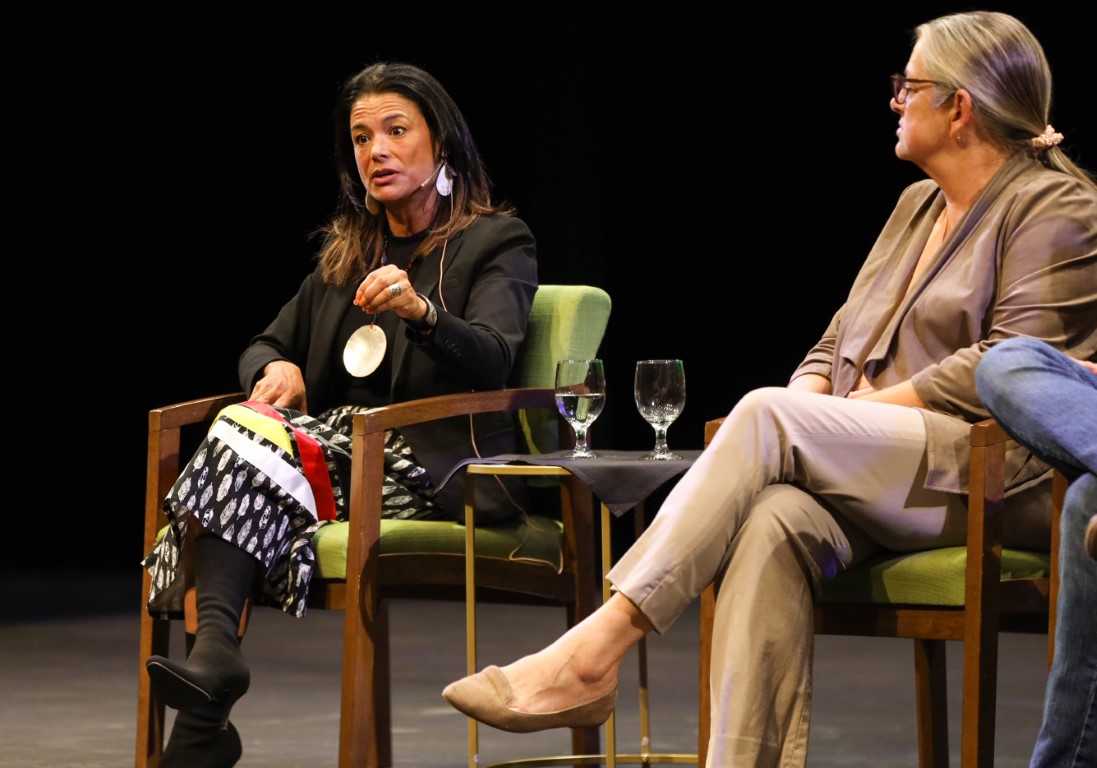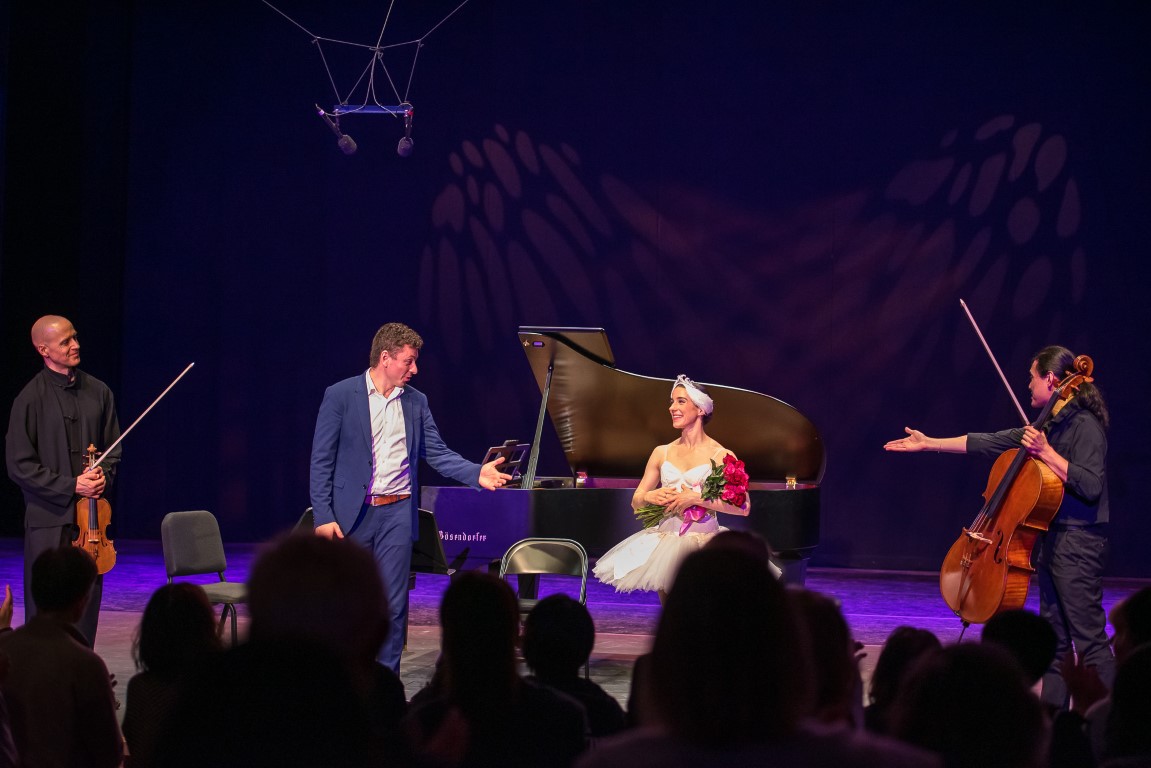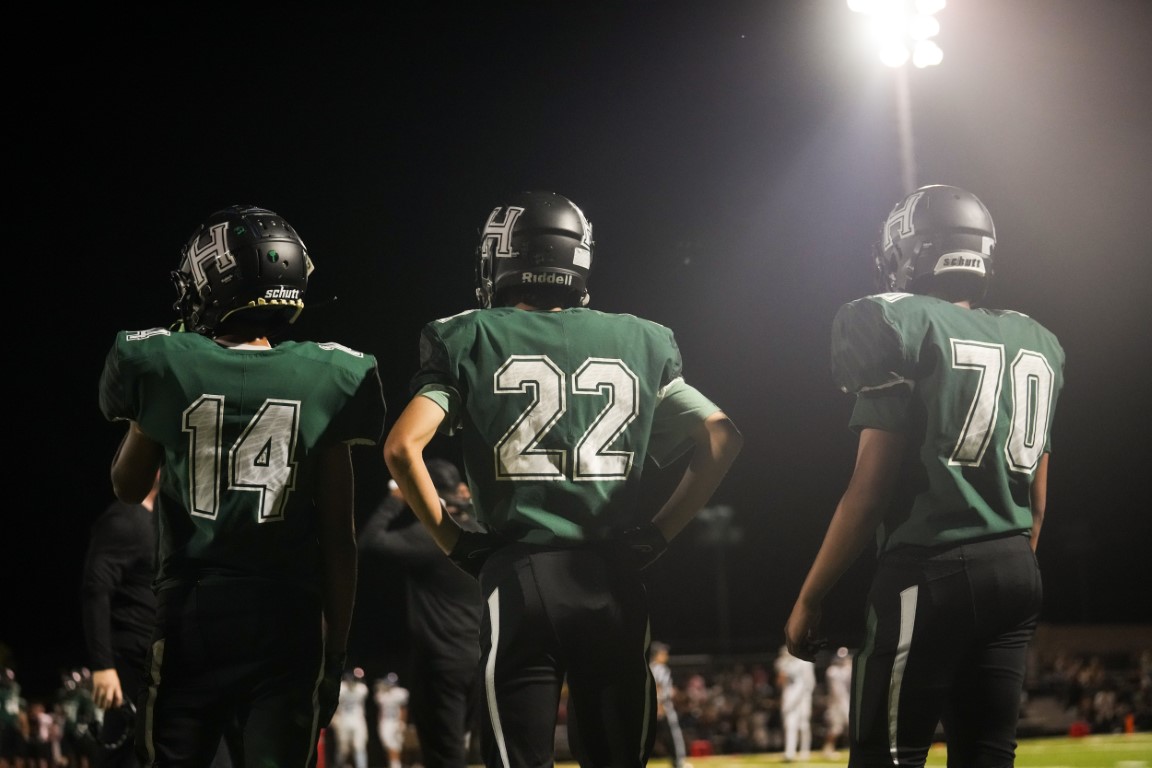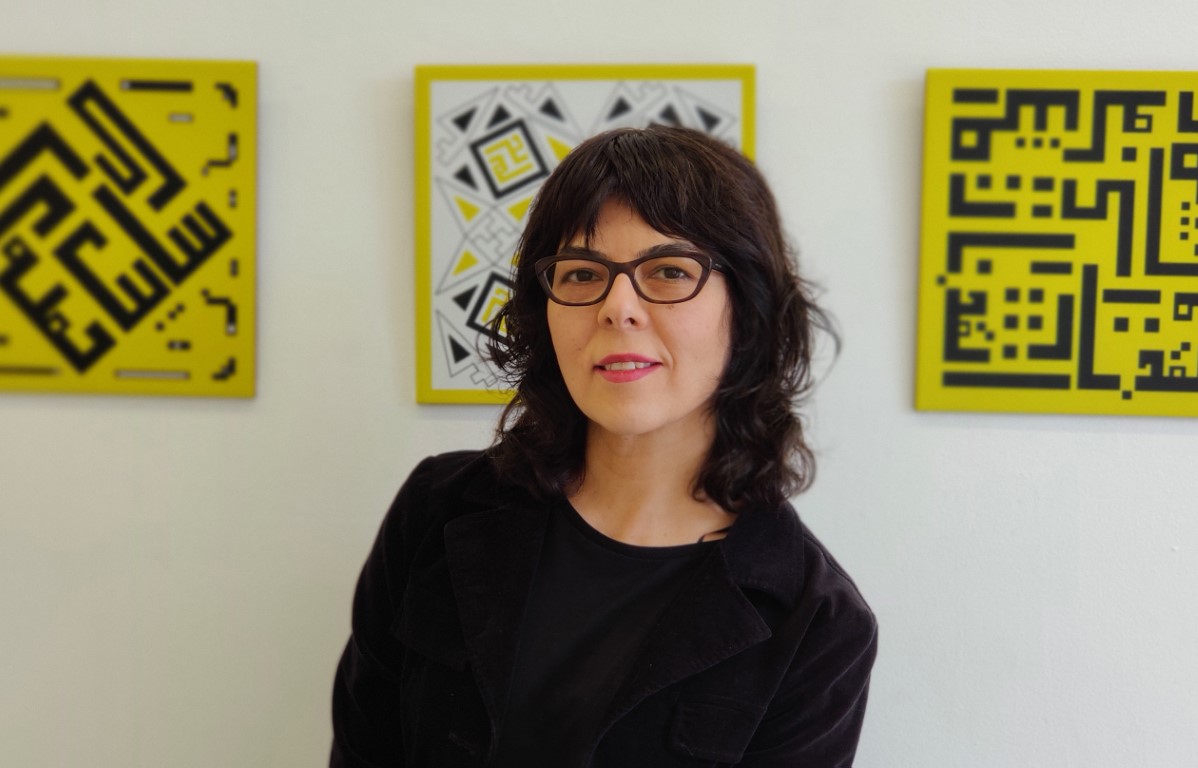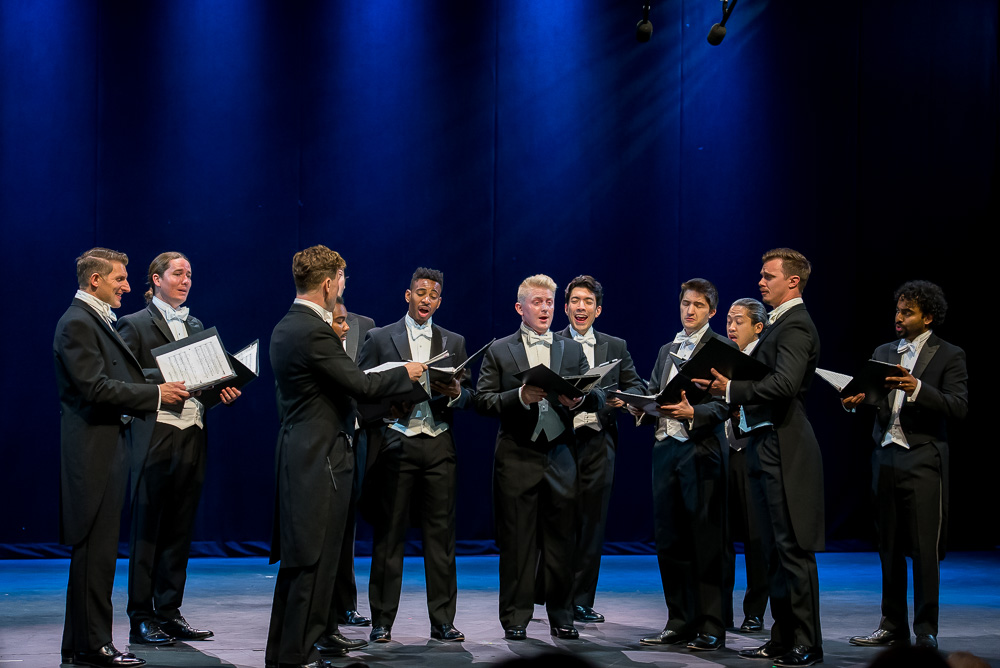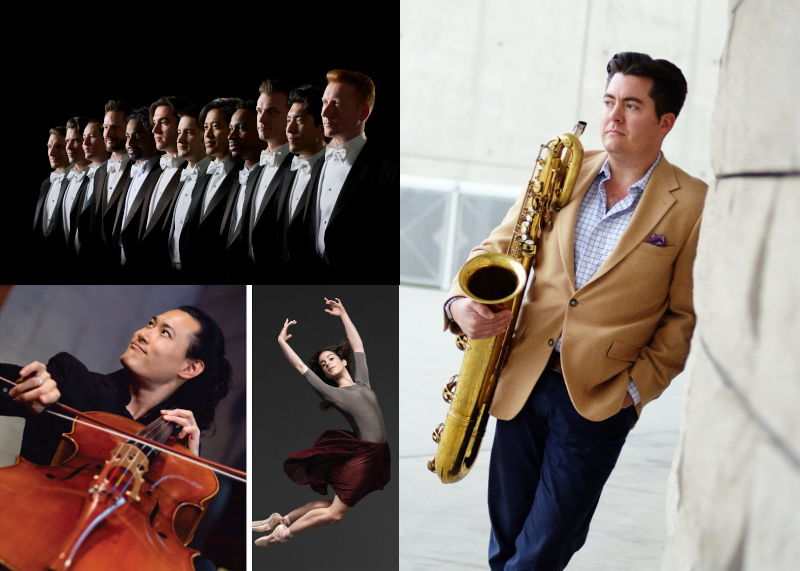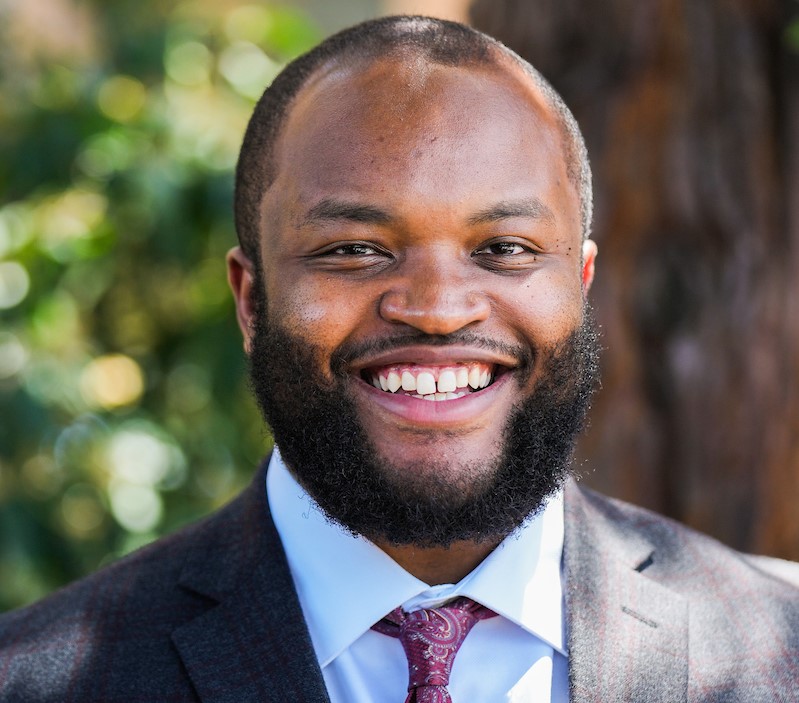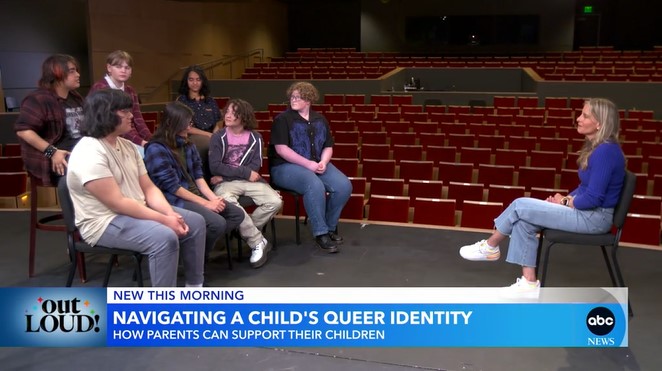A panel of experts on Bay Area Indigenous history was joined by Charlene Nijmeh, chairwoman of the Muwekma Ohline tribe on Nov. 2 for the first event of this year’s Harker Speaker Series.
Schoolwide
Jonah Kim and Julia Rowe unite music and dance at Patil Theater
Cellist Jonah Kim and Julia Rowe – accompanied by pianist Dominic Cheli and violinist Moni Simeonov – played (and danced) for a near-capacity crowd at the Patil Theater.
Harker Day attracts big crowds on a sweltering Saturday
The high temperatures didn’t stop thousands from visiting the upper school campus on Oct. 7 for this year’s Harker Day.
Pantea Karimi to be latest artist-in-residence for Dickinson Endowment
This November, Iranian-American artist Pantea Karimi will begin her residency for the Dickinson Visual Arts Endowment.
Chanticleer dazzles with technique, harmony and diverse repertoire
2023-24 Harker Concert Series season: Tickets available now
This season will feature Chanticleer, the duo of cellist Jonah Kim and dancer Julia Rowe and saxophonist and composer Aaron Lington.
DEI director Davis co-delivers workshop at Trinidad and Tobago conference
Late last month, Harker DEI director Brian Davis attended the International Peace Research Association Conference in Trinidad and Tobago.
The ‘I’ Perspective: How affinity groups are increasing inclusivity
Learning to tell their stories
ABC airs “Good Morning America” segment on LGBTQ+ youth filmed at Harker
ABC’s Good Morning America aired a segment on parents learning how to support their LGBTQ+ children.
